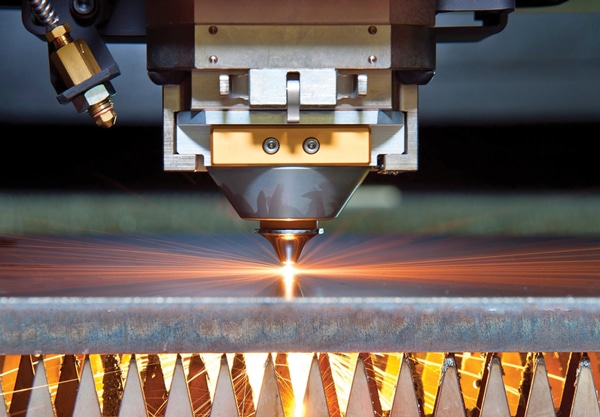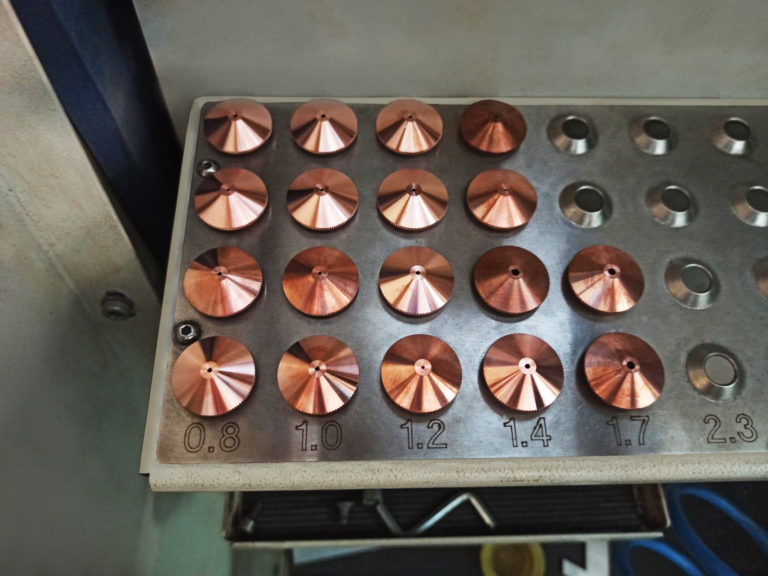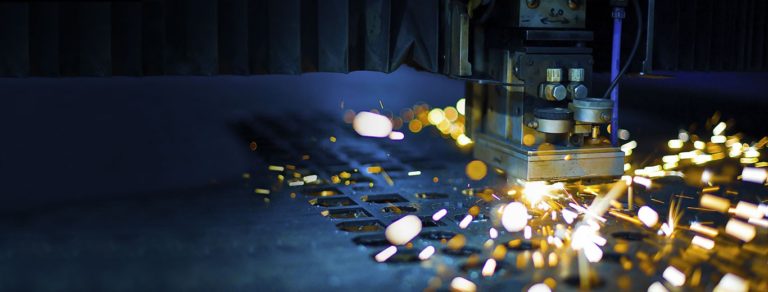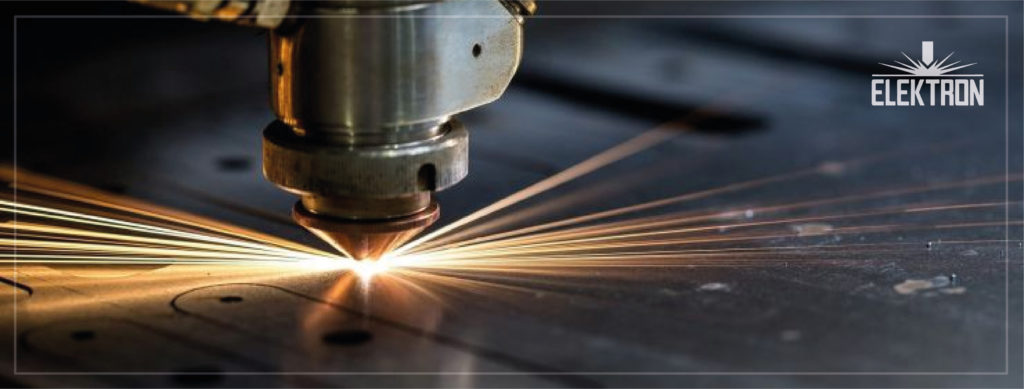The choice of machines for sheet metal cutting is very wide. In heavy industry, contractors have at least a few cutting methods at their disposal. The most popular are mechanical cutting, plasma cutting, cutting with a torch, water jet, and laser. It should be admitted, however, that this type of laser cutting is currently the most frequently used and most effective method of shaping both miniature and large-sized sheet metal elements. This is a machining variant that combines extraordinary precision and high repeatability, a favourable price, and a fast lead time.
Types of lasers for cutting sheet metal
What are the main types of lasers used to cut sheet metal?
Sheet metal laser cutting is performed using two main types of lasers:
- gas lasers – using CO₂ gas mixtures
- semiconductor lasers

Laser cutting of metal sheets using a gas laser
Sheet metal laser cutting can be performed using laser technology in combination with high purity gas. Gas lasers are most often based on an electrically activated carbon dioxide gas mixture. Gas laser cutting is one of the most attractive solutions widely used in the metallurgical market and not only because, apart from metallic materials such as structural steel or stainless steel, it is also equally good at cutting non-metallic materials such as rubber or plexiglass. This technology is based on the use of a carbon dioxide gas mixture, nitrogen and helium. CO2 lasers are characterised by relatively high efficiency and very good quality of laser beam radiation, which is why they are currently the most frequently used lasers in the execution of engraving orders. The wavelength when using this type of laser for cutting sheet metal is 10.6 micrometres. Despite many advantages, laser cutting of sheet metal using CO2 is not the most efficient option at the moment, especially when compared to the fibre laser, which we will now turn to.
Laser cutting of metal sheets with a fibre laser
Fibre lasers belong to the group of crystal lasers and they produce a laser beam using the so-called seed laser, which is reinforced in special glass fibres, to which energy is supplied through pumping diodes. Thanks to the wavelength of 1.064 micrometres, fibre lasers have a very small focal diameter, and their intensity is greater than that of CO2 lasers of similar power. Fibre lasers are perfect for cutting sheet metal and engraving metal surfaces. This type of laser is distinguished by energy savings, increased laser beam concentration, and exceptionally favourable light absorption by metal.



How powerful is the laser for cutting sheet metal?
Regardless of whether we choose a CO2 or fibre laser, the next stage should be the appropriate selection of its strength in relation to the specific material and the specifics of the order. The primary function of the laser is to cut thin materials, so choosing a high-power device to maximise the scope of its application,
including extending the range of services to thick materials, may prove to be economically disadvantageous. Any attempt to extend the cutting range above 20 mm of material thickness will necessitate increasing it several times, which will increase the cost of the operation. For example, to cut a sheet 20 mm thick, you will need a 4 kW laser, and the same operation on a material with a thickness of 25 mm already requires a 6 kW laser.
